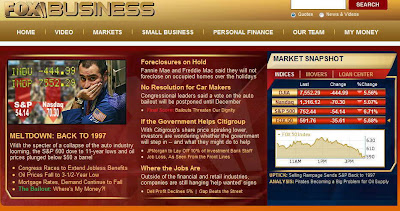
Caille touts Quebec gas reserves
Lyne Moore, Montreal Gazette
Thursday, November 27, 2008
Once "geological and technical uncertainties" pertaining to unconventional gas reserves in the St. Lawrence lowlands are settled and the resource is proven, Quebec natural gas could generate more jobs and economic benefits than Hydro-Quebec, Andre Caille, the former CEO of the provincial utility told an equally-enthusiastic gathering at Quebec Exploration 2008.
During the annual Quebec Petroleum Society dinner, Caille said that the projected figures related to the gas play "are so big" that he wanted to review them because he was more accustomed to Hydro-Quebec's.
He later talked about 1,000 direct jobs and economic spinoffs worth $10-billion in 2007 dollars.
The multi-billion dollar question is not whether there is gas in the lowlands' shale but whether it can be retrieved economically; the first of the answers to those questions - all agree - are months away.
But investment dollars continue to flow into the project that analysts have already described as potentially one of the largest unconventional gas plays in Canada.
Part of the interest resides in the fact that Quebec has the lowest gas royalty fees in Canada - 12 per cent - and Alberta's are about to jump to 50 per cent.
This week, a Calgary-based private equity firm paid $3.5 million to junior companies to earn a 60 per cent interest in their exploration permits.
It may rival the largest U.S. onshore gas field - the Texas Barnett shale. Major producers, Talisman and Forest Oil - which says its assets may hold as much as four trillion cubic feet of gas reserves.
An array of test wells have been put down recently and critical results are expected within months.
Questerre Energy Corporation: Excellent Early Results From Shale Programs in Third Quarter
00:15 EST Thursday, November 13, 2008
CALGARY, ALBERTA--(Marketwire - Nov. 13, 2008) -
NOT FOR DISTRIBUTION ON U.S. NEWSWIRE SERVICES OR FOR DISSEMINATION IN THE UNITED STATES
Questerre Energy Corporation ("Questerre" or the "Company") (TSX:QEC) (OSLO:QEC) reported today on its financial and operating results for the third quarter of 2008.
"The appraisal of our major shale gas discovery in Quebec began in the third quarter with excellent early results," commented Michael Binnion, President and Chief Executive Officer.
"Pilot programs by our partners are on track to assess the commerciality of the Utica and Lorraine shales. We were also encouraged by a 10 mmcf/d test of the Liard shales at the Beaver River Field in British Columbia."
"The success of the drilling program in Antler largely contributed to our improved financial results during the quarter," Mr. Binnion added.
"Despite lower realized prices, cash flow from operations was $5.41 million up from $5.14 million in the preceding quarter. We maintained a strong balance sheet with no debt and positive working capital of over $67 million at the end of the quarter."
"Our financial strength and conventional assets allows us to weather these challenging markets and thoroughly evaluate what could yet prove to be the most valuable natural gas find in Canada."
Highlights
- Successful Utica shale production test in the St. Lawrence Lowlands, Quebec
- Expanded pilot programs commenced in the Lowlands with 4 wells spud during the quarter
- Liard shale well tests at over 10 mmcf/d at Beaver River Field, British Columbia
- Antler, Saskatchewan development program underway with drilling of 2 wells and stimulation of 5 wells in the third quarter
- Quarterly cash flow from operations increased over 124% to $5.41 million from $2.41 million in the third quarter of 2007
- Increased oil production contributed to improved operating netbacks of $48.51 per boe from $17.39 per boe in the prior year
Cash flow from operations for the third quarter of 2008 grew to $5.41 million from $2.41 million in 2007 and $5.14 million in the second quarter. The increase reflects the higher oil weighting in the Company's production profile and stronger commodity prices and netbacks during the quarter.
The Company maintained its financial position with a working capital surplus of $67.83 million at September 30, 2008 as compared to $10.00 million at December 31, 2007.
Petroleum and natural gas revenue for the three months ended September 30, 2008 was $8.89 million. This represents a 105% increase over revenue of $4.34 million in the same period in 2007 and relatively unchanged over revenue of $9.04 million in the second quarter of this year.
With average daily production of 1,292 boe/d (2007: 1,206 boe/d) in the quarter, higher commodity prices were primarily responsible for the higher revenue.
The Company reported net earnings of $0.29 million for the quarter as compared to a loss of $0.68 million in 2007.
Questerre is a Calgary-based independent resource company actively engaged in the exploration, development and acquisition of high-impact exploration and development oil and gas projects in Canada.
This news release contains forward-looking information. Implicit in this information are assumptions regarding commodity pricing, production, royalties and expenses, that, although considered reasonable by the Company at the time of preparation, may prove to be incorrect. These forward-looking statements are based on certain assumptions that involve a number of risks and uncertainties and are not guarantees of future performance.
Actual results could differ materially as a result of changes in the Company's plans, commodity prices, equipment availability, general economic, market, regulatory and business conditions as well as production, development and operating performance and other risks associated with oil and gas operations.
There is no guarantee made by the Company that the actual results achieved will be the same as those forecasted herein.
Barrel of oil equivalent ("boe") amounts may be misleading, particularly if used in isolation. A boe conversion ratio has been calculated using a conversion rate of six thousand cubic feet of natural gas to one barrel of oil and is based on an energy equivalent conversion method application at the burner tip and does not necessarily represent an economic value equivalent at the wellhead.
Questerre Energy CorporationAnela DidoInvestor Relations
(403) 777-1185(403) 777-1578 (FAX)










































